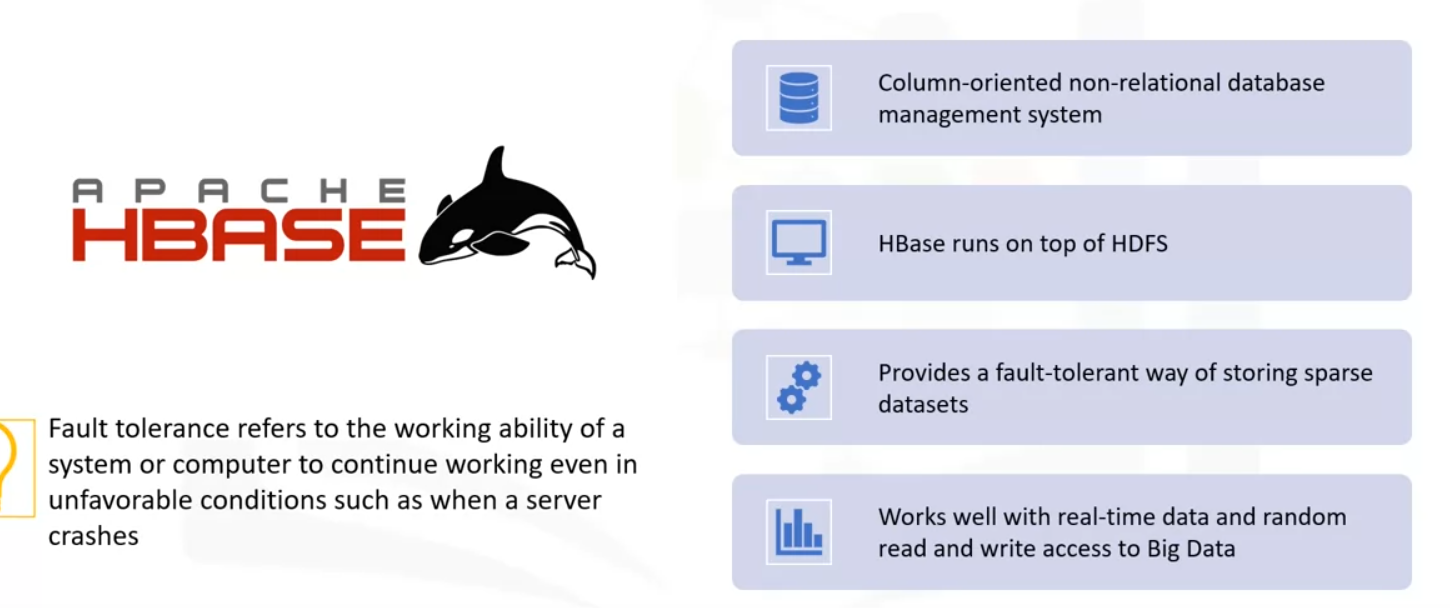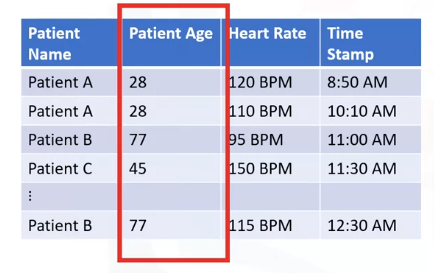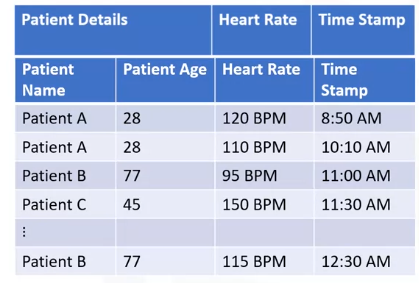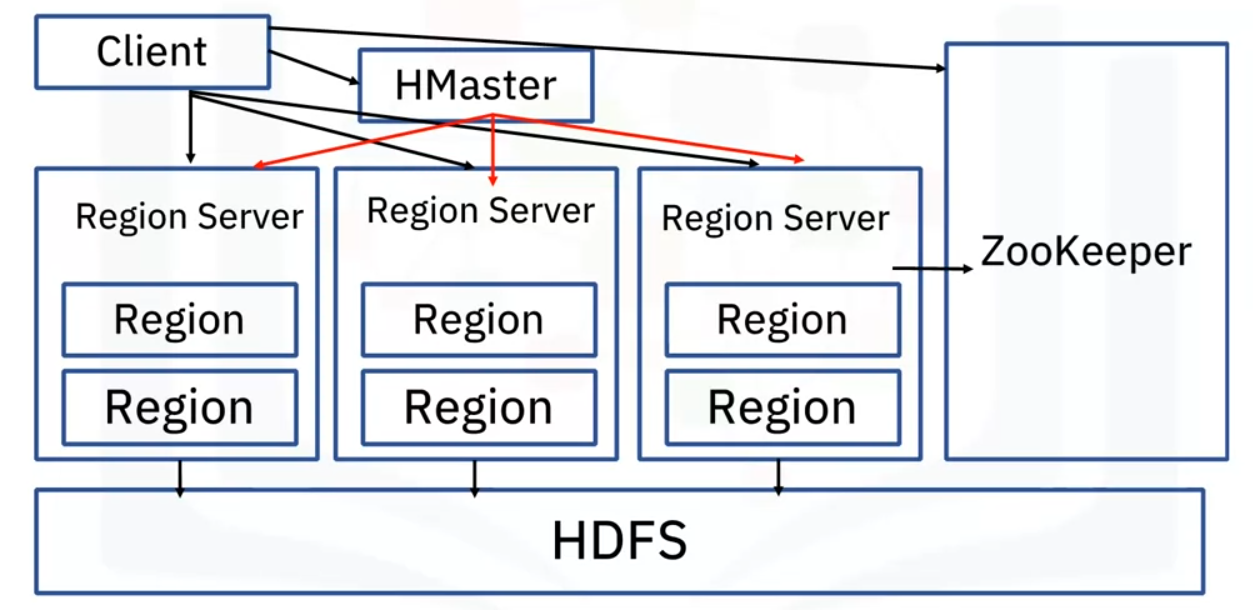HBASE
- HBase is a column-oriented non-relational database management system
- Runs on top of Hadoop Distributed File System, or HDFS.
- Provides a fault-tolerant way of storing sparse data sets.
- It works well with real-time data and random read and write access to Big Data.

- Fault tolerance refers to the working ability of a system or computer to continue working even in unfavorable conditions such as when a server crashes.
Features

- HBase is used for write-heavy applications, to store large amounts of datasets, and process and provide analytics in real time.
- It is referred to as linearly scalable because it supports scalability in both linear and modular form.
- HBase is a backup support for MapReduce jobs.
- HBase can be used for high-speed requirements because it offers consistent reads and writes.
- HBase has no fixed columns and is only defined by column families.
- It provides an easy-to-use Java API for client access.
- HBase supports data replication across clusters.
Column
An HBase column represents an attribute of an object. Let’s look at an example.

- If the table is storing sensors from heart monitors in the hospital, each row might be a log record.
- A typical column could contain information about the patient’s details or the time when the log record was taken.
- HBase allows for many attributes to be grouped together into column families such that the elements of a column family are all stored together.
- For example, “Patient Name” and “Patient Age” will be stored as ”Patient Details.”
- The columns in HBase will look like –

- Patient Details, Heart Rate, and Time Stamp.
- When creating schemas in HBase, you must predefine the table schema and specify the column families.
- New columns can be added to families at any time, making the schema flexible and adaptable to changing application requirements.
- Just as HDFS has a Name Node and secondary nodes, HBase is built on similar concepts.
- In HBase, a primary node manages the cluster and a region server stores portions of the tables and performs the work on the data.
HBase vs HDFS

While HBase and HDFS are both used to store massive amounts of data, one of the major differences is that
- HBase stores data in the form of columns and rows in a table while
- HDFS stores it in a distributed manner across different nodes on that network.
- HBase allows dynamic changes while HDFS has a rigid architecture that doesn’t allow changes.
- HBase is suitable for read, write, update, and delete type workloads on a record level.
- HDFS is just an underlying level resembling properties of a file system, so is more suited for write once and read in batch workloads.
- HBase allows for storing and processing of Big Data while HDFS is for storing only.
Architecture

The HBase architecture consists mainly of four components:
- HMaster
- HRegionserver
- HRegions
- ZooKeeper
- From the architecture, we can see that HBase sits and works on top of HDFS.
- HDFS provides a distributed environment for the storage, and it is a file system designed to run on commodity hardware. It stores each file in multiple blocks, and to maintain fault tolerance, it replicates the blocks across a Hadoop cluster.

HMaster
HMaster is the master server. It monitors the region server instances, assigns regions to region servers, and distributes services to different region servers, and manages any changes that are made to the schema and metadata operations.
Regionserver
The region servers receive read and write requests from the client and assign the request to a specific region where the column family resides. They are responsible for serving and managing regions that are present in a distributed cluster.
- Rather than go through HMaster all the time, the regionservers can communicate directly with the client to facilitate requests.
Regions
The Region is the basic building element and smallest unit of the HBase cluster that consist of column families.
- It contains multiple stores, one for each column family and has two components – HFile and Memstore.
ZooKeeper
ZooKeeper is a centralized service for maintaining configuration information to maintain healthy links between nodes.
- It provides synchronization across distributed applications and is used to track server failure and network partitions by triggering an error message, and then starts repairing the failed nodes.